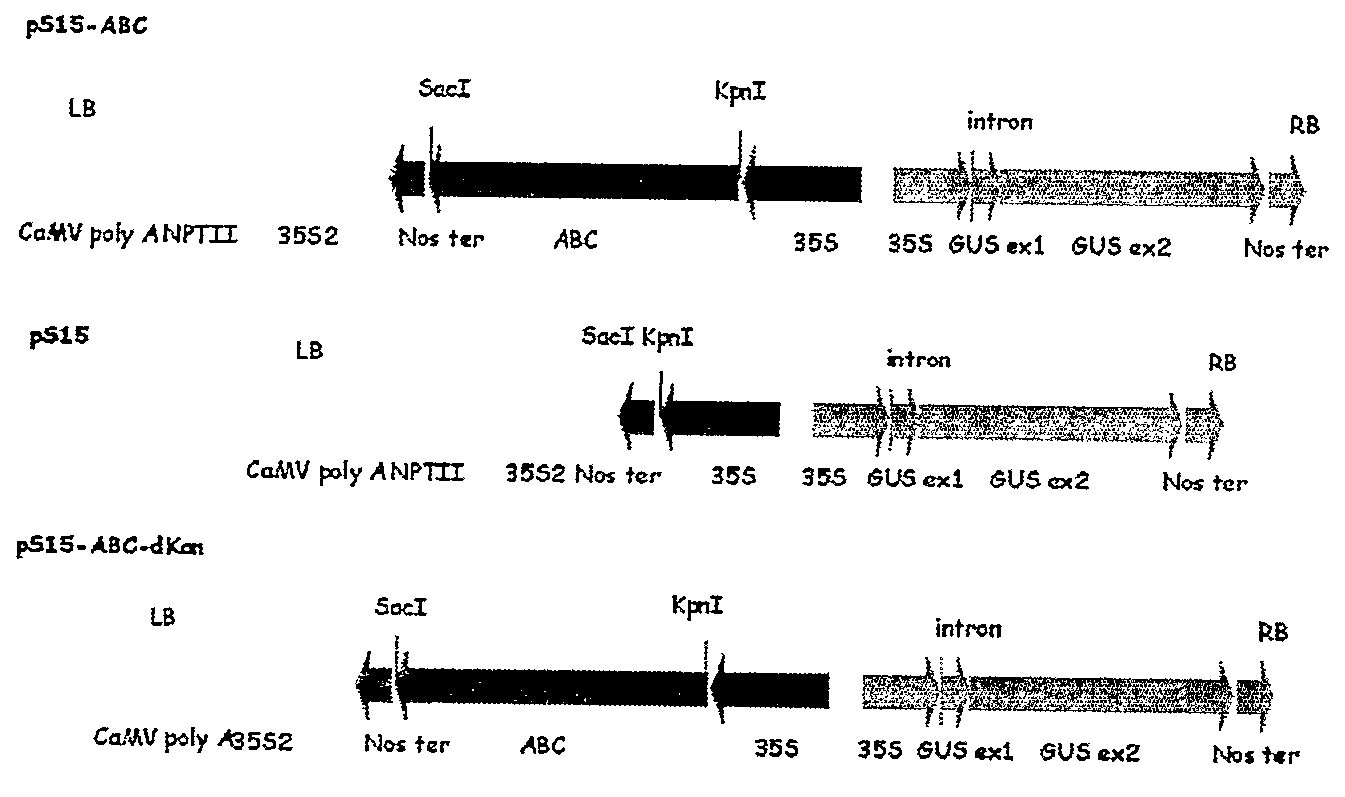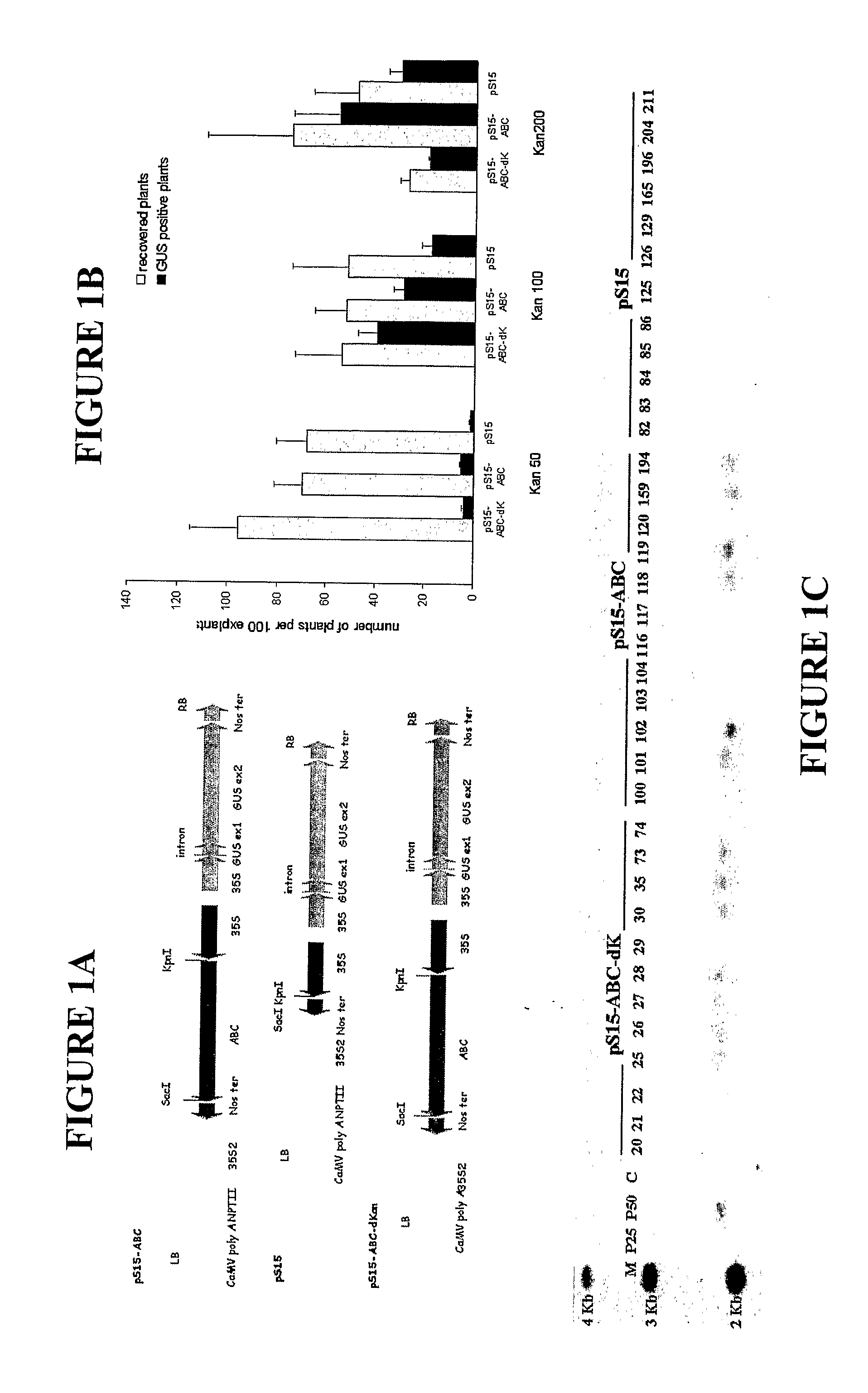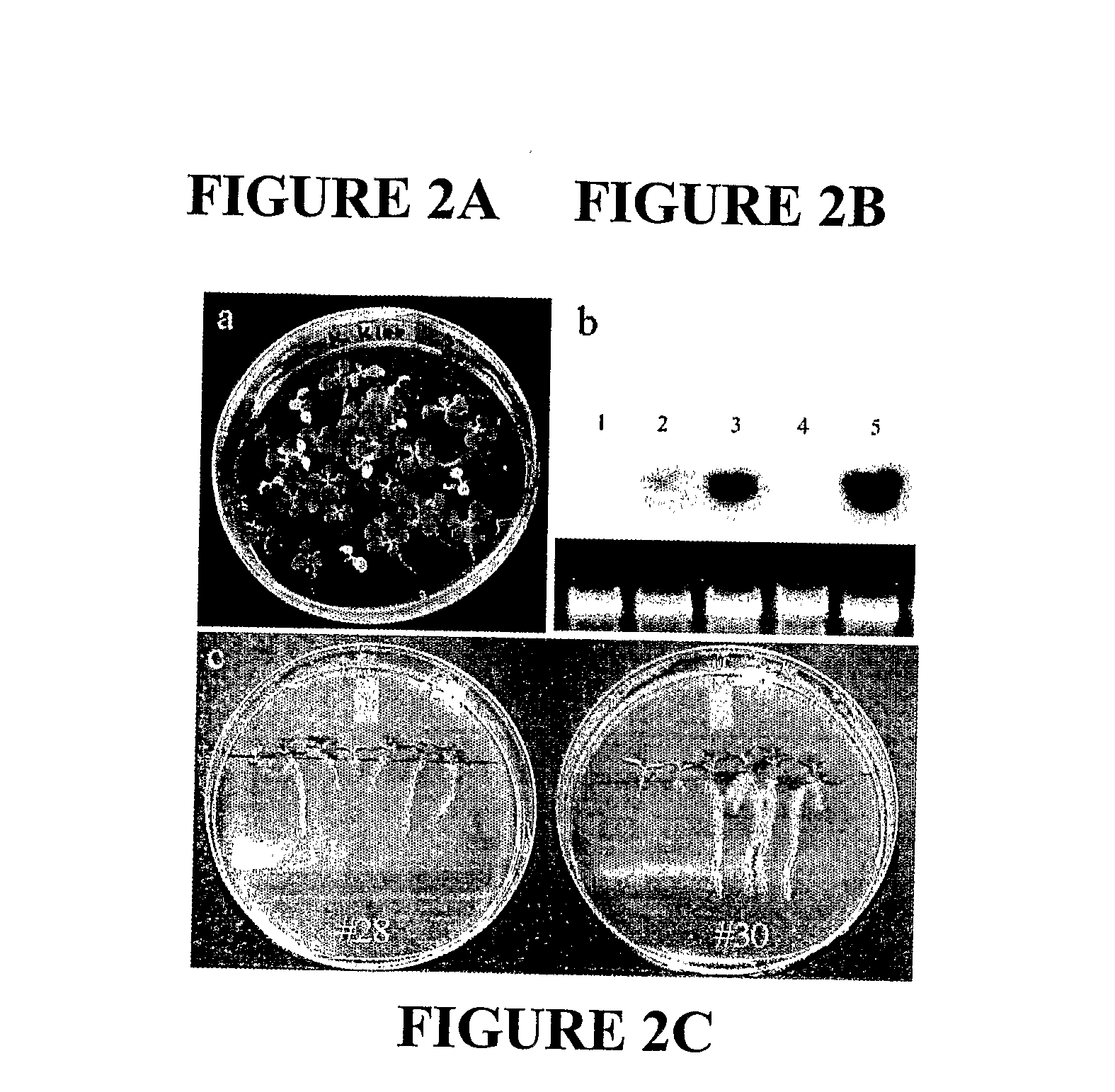Antibiotic Resistance Conferrred by a Plant Abc Transporter Gene when Expressed in Transgenic Plants
a technology of plant abc and transporter gene, which is applied in the field of antibiotic resistance conferred by plant abc transporter gene when expressed in transgenic plants, can solve the problems of new antibiotic resistance problems
- Summary
- Abstract
- Description
- Claims
- Application Information
AI Technical Summary
Problems solved by technology
Method used
Image
Examples
example 1
[0083]In a previous study in which we examined the genome-wide response of Arabidopsis to the xenobiotic compound trinitrotoluene (TNT) via cDNA microarrays, we found that Atwbc19 (At3g55130) was among upregulated genes (Mentewab et al., 2005). Given the role of ABC transporters in cellular detoxification we sought to further characterize this gene. Initial surreptitious characterization of mutants revealed that root growth of Atwbc19 knockout mutants on media containing kanamycin was much slower than that of other ABC mutants. We specifically compared the kanamycin resistance level of mutants of Atwbc19 (SALK—107731) and two close homologues Atwbc18 (SALK—100187) and Atwbc16 (SALK—119868) sharing over 76% peptide similarity with Atwbc19 (FIG. 5).
[0084]The mutants are T-DNA insertional mutants transformed with plasmid pROK22 containing an nptII gene, under the control of the nopaline synthase (nos) promoter. Therefore, we also compared their NPTII protein synthesis levels by ELISA a...
example 2
[0087]During characterization of Atwbc19 knockout mutants we observed that root growth on media containing kanamycin was much slower than that of other mutants. We compared tobacco transformation (Horsch et al., 1985) efficiencies among three plasmids containing overexpressed Atwbc19, nptII, and both genes together (FIG. 1A). Transgenic plants were recovered from each construct using selection of 50, 100 and 200 mg / l kanamycin, but the transformation efficiency differed among treatments. A selection regime of 50 mg / l kanamycin resulted in less than 8% efficiency for any of the three plasmids, indicating that the selection pressure was not sufficient (FIG. 1B). Using Atwbc19 alone as the selection gene, the majority of plants recovered media containing 100 or 200 mg / l kanamycin were transgenic (73 and 69% respectively). However, selection at 200 mg / l kanamycin was overall less effective since the total number of transgenic plants regenerated was decreased from 40% to 19% per explant....
example 3
Materials and Methods
Bacterial Strains and Plasmids
[0103]Escherichia coli DH5α was obtained from stock strains available within our lab. All strains were cultured on LB media. Three plasmids were used in this study. pKS-ABC contains the Atwbc19 gene under the control of the lacZ promoter in pBluescript II SK+; pKS-nptII contains the nptII gene with the lacZ promoter in pBluescript II SK+; and pKS is pBluescript II SK+ with no inserted genes as a control. The microorganisms were maintained in glycerol stocks and stored at −80° C. Working cultures were obtained by inoculating a loopful of culture into 50 ml LB broth supplemented with ampicillin (100 mg / l) and incubated at 37° C. for 24 hr.
[0104]Determining Susceptibility of Escherichia coli to Kanamycin
[0105]Inserts were sequenced at 5′ and 3′ ends. The gram-negative soil bacteria Escherichia coli were examined for resistance to varying levels of kanamycin prior to transformation experiments under own experimental conditions. Bacteria...
PUM
| Property | Measurement | Unit |
|---|---|---|
| Electrical resistance | aaaaa | aaaaa |
Abstract
Description
Claims
Application Information
 Login to View More
Login to View More - R&D
- Intellectual Property
- Life Sciences
- Materials
- Tech Scout
- Unparalleled Data Quality
- Higher Quality Content
- 60% Fewer Hallucinations
Browse by: Latest US Patents, China's latest patents, Technical Efficacy Thesaurus, Application Domain, Technology Topic, Popular Technical Reports.
© 2025 PatSnap. All rights reserved.Legal|Privacy policy|Modern Slavery Act Transparency Statement|Sitemap|About US| Contact US: help@patsnap.com



